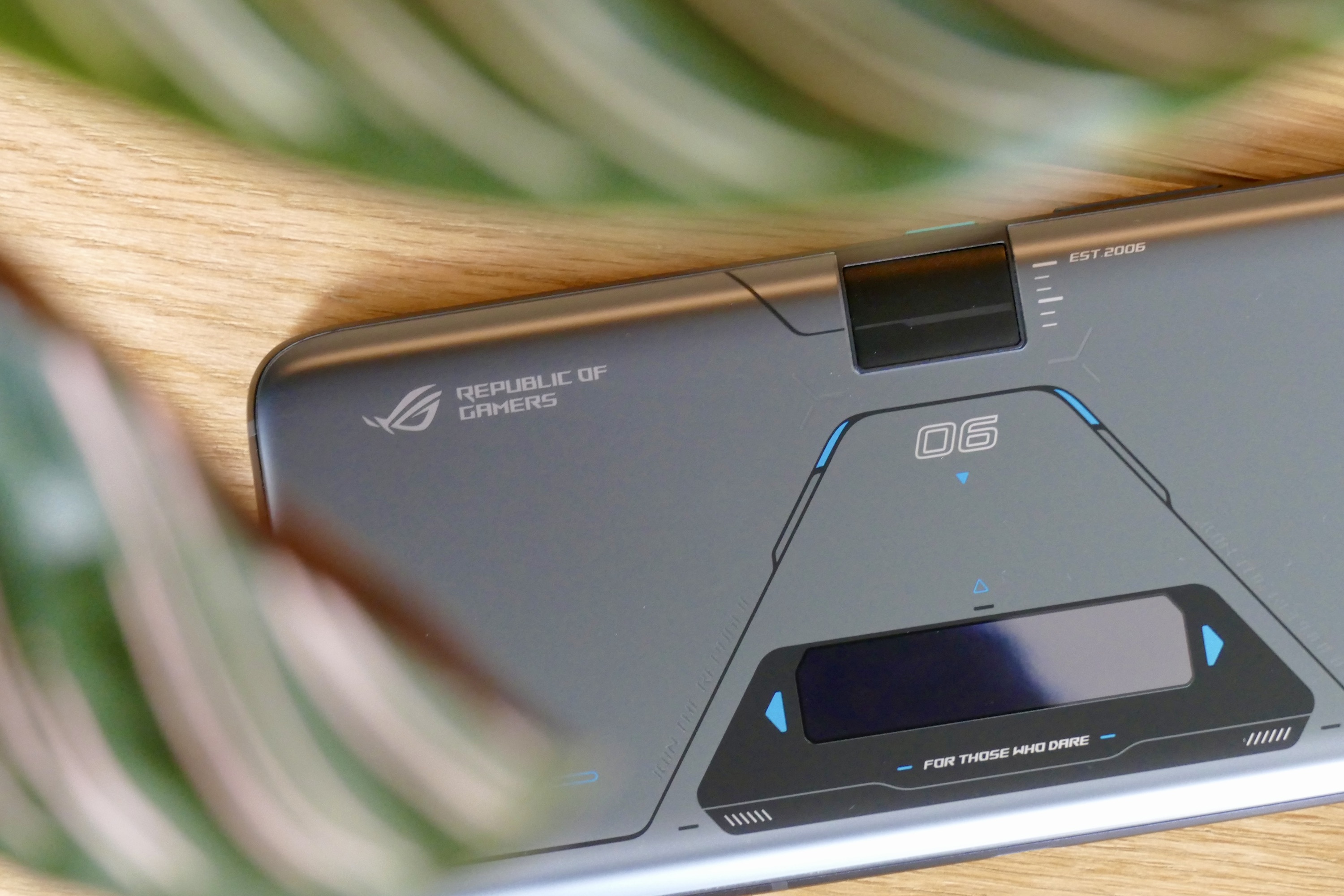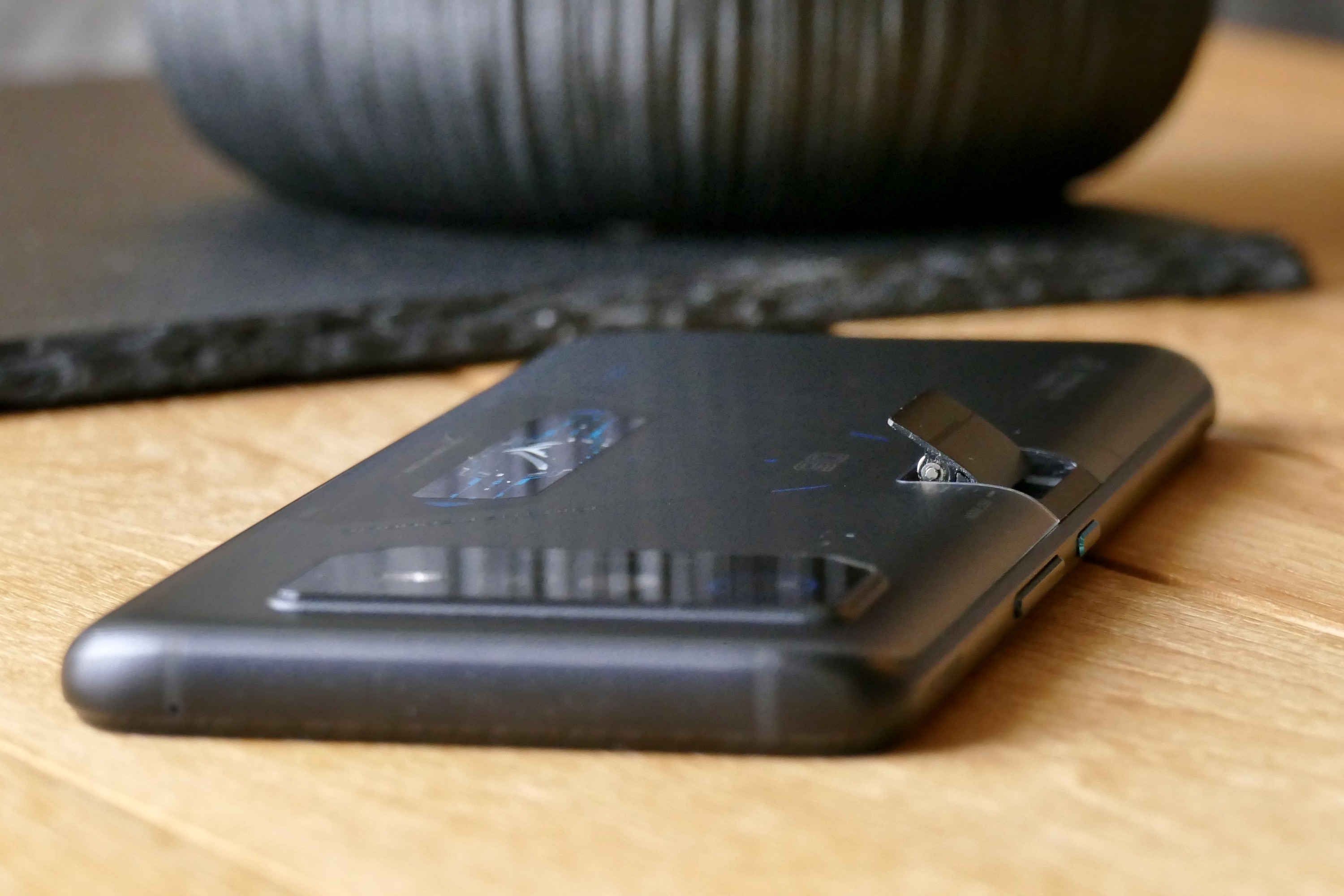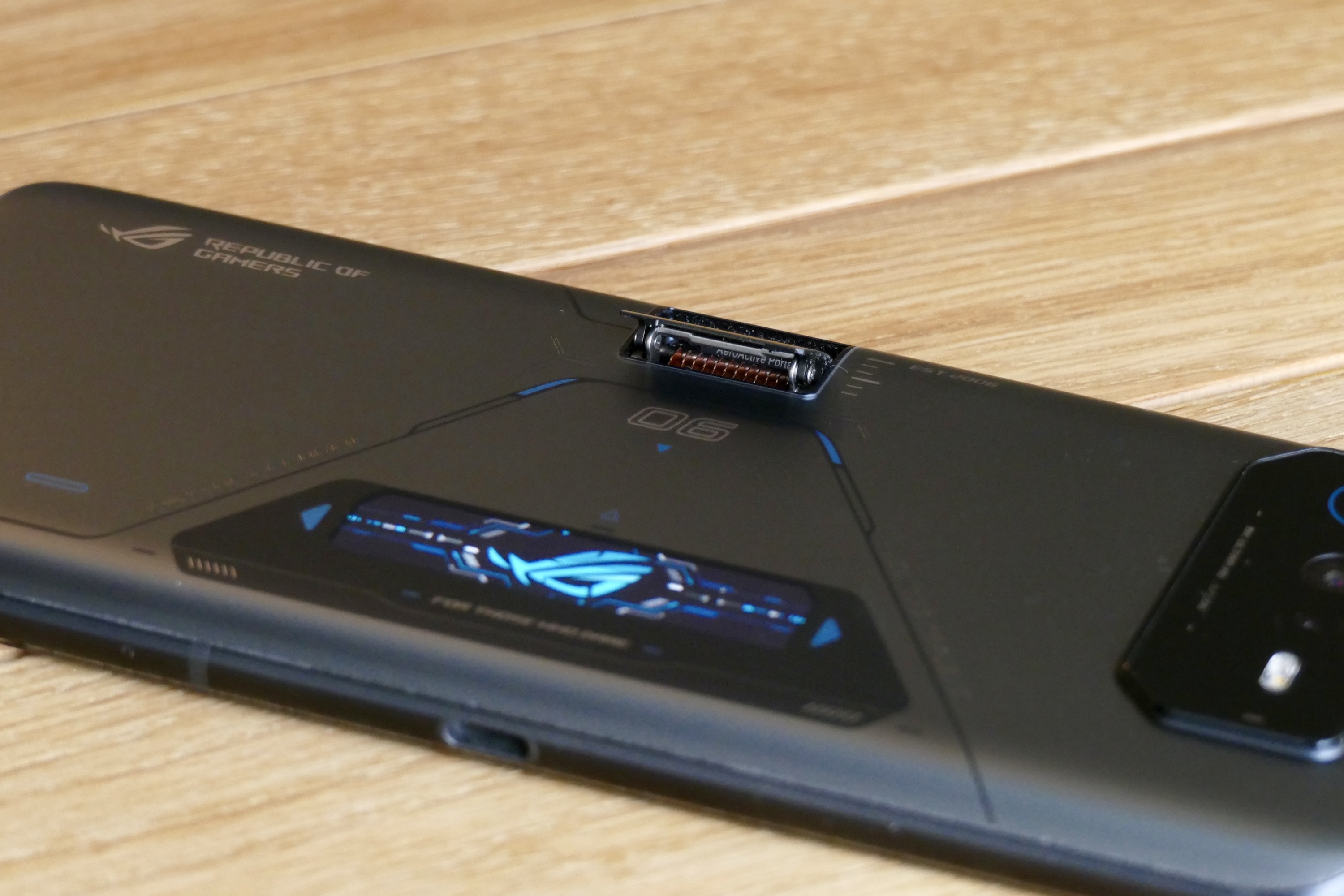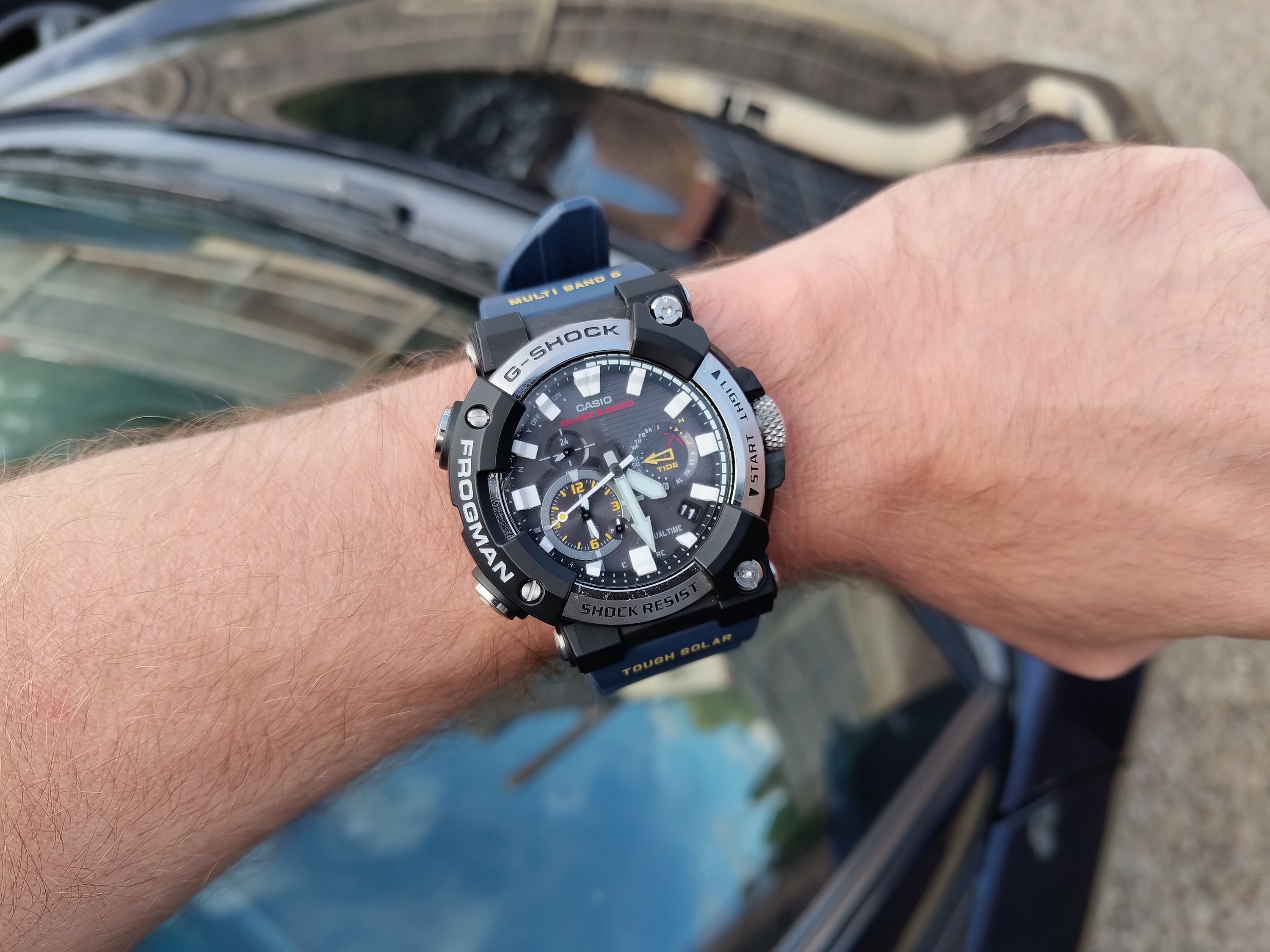The Asus ROG Phone 6D Ultimate is a phone full of surprises. For a start, don’t expect a Qualcomm processor inside. For its 2022 Ultimate version of the ROG Phone 6, Asus has leaned on MediaTek to supply the power. Next, don’t just look at the back of the phone and think it’s basically the same as the recently announced ROG Phone 6 Pro, because it actually has a hidden, motorized cooling port.
We’ve been using the ROG Phone 6D Ultimate alongside the excellent ROG Phone 6 Pro to see if all this makes it as ultimate as Asus says it is.
A motorized cooling port — seriously
The big design difference between the ROG Phone 6D compared to the ROG Phone 6 and 6 Pro is the addition of a motorized cooling port on the back. It’s called the AeroActive Cooling Port, and it opens when the AeroActive Cooler 6 is attached to the phone. The Cooler 6 directly funnels the cold air generated by the external fan into the phone itself, rather than just onto the surface. Asus claims it provides a 20% increase in thermal efficiency.

It’s a really neat little thing. When you attach the fan, it automatically opens up inside; the moment it disconnects, the port closes, avoiding any chance of it staying open when you don’t want it. It can be manually opened to clean, and from what I’ve seen so far, dust is not something that can be avoided.
Anyone familiar with Asus’s phones will understand why it works so seamlessly, as it uses technology the company perfected with its Zenfone Flip cameras. Like those mechanisms, a stepped motor raises and lowers the port door, and of course, it’s accompanied by a cool sci-fi sound effect.
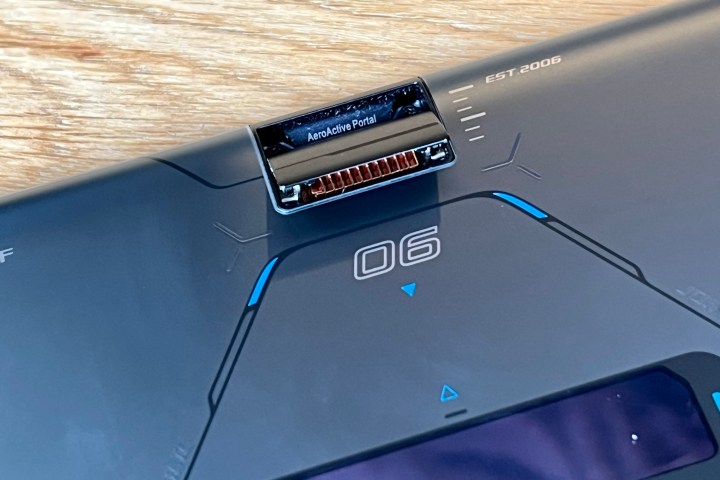
Asus has tested it to 40,000 operations, so it should be very durable. It also uses another feature taken from its old Zenfone Flip camera phones: an auto retraction system, so if you accidentally drop the phone, it closes up the instant it detects that fall. Even though there’s technically a hole in the back of the phone, Asus has still engineered the ROG Phone 6D Ultimate to have an IPX4 rating, meaning it’ll resist splashed water.
Does it really work?
To see if the ROG Phone 6D Ultimate’s cooling port does keep temperatures down, I put it up against the ROG Phone 6 Pro with the AeroActive Cooler 6 attached and ran a series of the 3DMark benchmarking app’s Wild Life Stress Tests, both the standard and the extreme version. This provides data that includes temperature, and a previous test revealed the differences the AeroActive Cooler’s various modes made to the phone’s overall temperature when it’s being worked hard. I activated Asus’s high-performance X Mode for the tests, ensuring both processors were working at maximum capacity.

We’ll look at the results in a moment, as at this point, it’s also worth talking about the other big difference between the phones: the processor. Inside the ROG Phone 6D Ultimate is a MediaTek Dimensity 9000+ chip, running at 3.2GHz and equipped with 16GB of new, higher-performing LPDDR5X RAM. By comparison, the ROG Phone 6 Pro has a 3.2GHz Qualcomm Snapdragon 8+ Gen 1 with 18GB of LPDDR5 RAM.
Last year, Asus used a Qualcomm processor in its Ultimate series ROG Phone 5, so it’s a surprise to see MediaTek featured so prominently in its 2022 flagship gaming phone. MediaTek isn’t best known for flagship chips, but it has been working to change that over the past few years. It’s quite the feather in its cap to one-up rival Qualcomm here, but is it justified? After all, on paper, the two chips aren’t that far apart in terms of spec.
Asus shocked me with its performance
The difference is noticeable enough that it shocked me. The Qualcomm-powered phone has masses of ability, and I really hadn’t expected the ROG Phone 6D Ultimate to be any better. But the MediaTek-powered phone not only kept up, it maintained a steadier frame rate the longer I tested the two together, plus it never reached the maximum temperature achieved by the ROG Phone 6 Pro showing the cooling port does its job.
The Asus ROG Phone 6D Ultimate… has a motorized cooling port on the back. It works with the AeroCooler Active 6 fan accessory, which blows cool air *inside* the phone.
Here's what it looks like when you open the port manually for cleaning purposes.#AsusROGPhone6DUltimate pic.twitter.com/kcyho76H7Q— Andy Boxall (@AndyBoxall) September 19, 2022
Asus itself says the cooling benefits from the AeroActive Cooling Port come after an hour of continuous play, and anything up to 45 minutes it’s about the same as the ROG Phone 6 Pro. We’ll come back to why this is important to know shortly, but it’s crucial to helping you understand which ROG Phone 6 is for you.
A word on using a benchmarking app. We don’t tend to focus on benchmark scores in general, as they don’t have much relevance in the real world. Play some games, and the ROG Phone 6D Ultimate’s ability is also clear. It’s incredibly smooth and maintains that smoothness seemingly at all times. But it’s not like the ROG Phone 6 Pro is feebly slow, and playing them back-to-back for a normal period of time, I couldn’t really see any difference between them. Again, I’ll come back to why this is important to know.
The performance benefits are not just because of the processor and the cooling directly. The phone also uses MediaTek’s Hyper Engine 5.0 gaming platform, which constantly looks at the frame rate, then anticipates any performance drop-off so it can make it less noticeable. A combination of all this is behind the ROG Phone 6D Ultimate’s highly impressive stats.
It does mean the phone eats through the battery, though, with nearly 20% disappearing from both over the course of the 20-minute test 3DMark test alone. However, use the ROG Phone 6D Ultimate normally (without games), and the 6,000 mAh battery has enough energy to last at least two full days and into the third.
The rest of the phone
Aside from the processor and the cooling port, the two phones are very similar. The Space Grey color is exclusive to the ROG Phone 6D Ultimate and the ROG Phone 6D, a cheaper version that loses out on the colorful ROG Vision screen on the back and makes do with an RGB logo instead. The same 50-megapixel camera with 13MP wide-angle and 5MP macro cameras found on the ROG Phone 6 Pro are on the back.

No one will buy the ROG Phone 6D Ultimate for the camera, but the main one takes good photos with plenty of color and pop. While the wide-angle camera does get carried away with saturation and smoothing, it’s good enough for casual use. The phone has the same weight and dimensions as the ROG Phone 6 Pro, so it’s a big, heavy beast. You get used to it, but it’s unwieldy for a start, especially using it one-handed to browse or scroll through Twitter.
Because the AeroActive Cooler 6 is integral to the ROG Phone 6D Ultimate’s operation, Asus has included it in the box. It has to be purchased separately for the ROG Phone 6 Pro and the standard ROG Phone 6D. Like the phone, it’s big, and I found it adds not just bulk to the phone when it’s attached, but also upsets the balance. This is especially noticeable when you use the brilliant AirTriggers on the phone’s top edge. These virtual buttons have multiple functions and really can add benefit to games with different controls.
Who is the ROG Phone 6D Ultimate for?
The ROG Phone 6D Ultimate is really aimed at serious mobile players. Wondering if you’re a serious player? If you play demanding games (Genshin Impact, Diablo Immortal, PUBG, Call of Duty: Mobile, and so on) for more than an hour every day, or play competitively, then the answer is probably yes. It’s during these lengthier play sessions when the steadier, higher frame rate will be noticed and appreciated, and the additional cooling will help keep temperatures under control. If you play less than an hour a day, or only a few times a week to kill time, then the Ultimate’s ability will likely be wasted.

Due to the phone’s performance and the motorized cooling port, a feature I’ve never seen before, the ROG Phone 6D Ultimate does seem to have earned its Ultimate name tag. But the fact it has done so makes it an even more niche version of an already niche phone. Even if you play mobile games a lot, the ROG Phone 6 Pro has more than enough power, battery, and features to satisfy.
As I said, I couldn’t see much difference between them when playing games for 30 minutes or so, but the benchmark results prove the ROG Phone 6D Ultimate has the potential to be the stronger performer the longer you play. If you play games a lot, and we mean a lot, then the Asus ROG Phone 6D Ultimate is the ultimate phone for you. Everyone else will be very satisfied with the ROG Phone 6 Pro.
Price and availability
The Asus ROG Phone 6D Ultimate will not be released in the U.S. It will be released in the U.K. and Europe, where it will cost 1,199 British pounds or 1,399 euros. This is around $1,365. The ROG Phone 6D is cheaper but doesn’t come with the AeroActive Cooler 6, and costs 799 pounds or 949 euros, which is approximately $910. In the U.S. the Asus ROG Phone 6 Pro will be available for pre-order soon through Amazon starting at $999.
Editors' Recommendations
- 3 reasons why I’ll actually use Anker’s new iPhone power bank
- This $375 Android phone surprised the heck out of me
- Samsung’s next folding phone could have a shocking price
- One of the first Android phones of 2024 isn’t what you expect
- I did an iPhone 15 Pro Max camera test and the results shocked me

